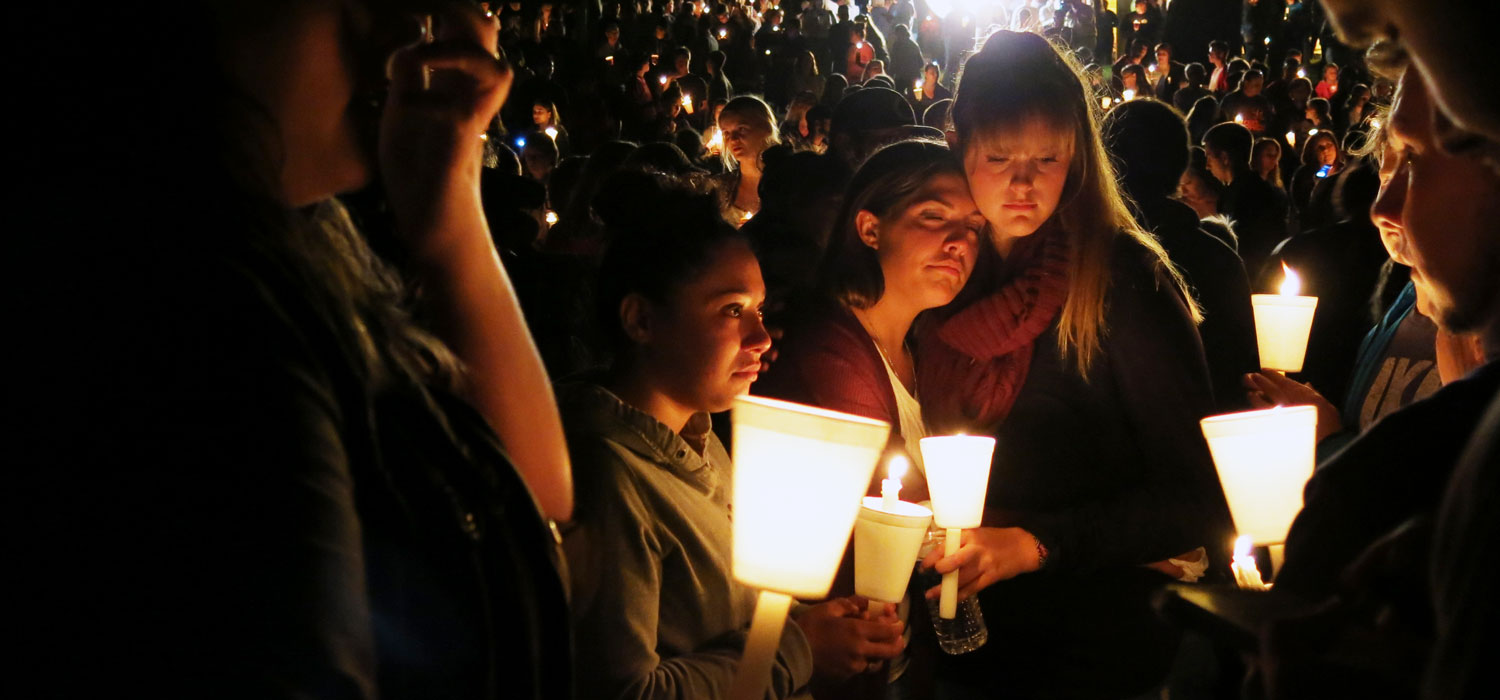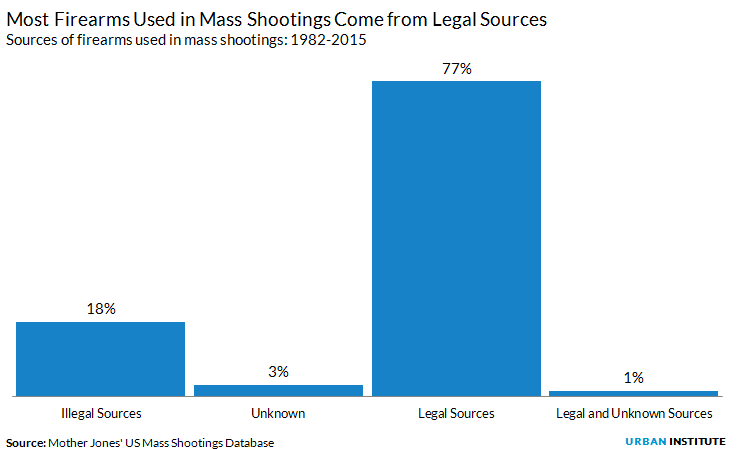
<p>Community members attend a candlelight vigil at Stewart Park for those killed during a shooting at Umpqua Community College in Roseburg, Ore., Thursday, Oct. 1, 2015. (AP Photo/Gosia Wozniacka)</p>
After publishing this post, we received new information identifying far more mass shootings in the United States than we originally counted. In addition to the UCC shooting, there were thirteen other mass shootings in the United States from January 2015 to July 2015. Including UCC, these acts claimed the lives of 76 victims and injured 32 more. Since 2009 there have been at least 133 mass shootings in the United States. In at least 73 of those cases, the shooter was not legally prohibited from purchasing a firearm, further demonstrating that in a majority of recent mass shootings, current firearm laws would not have prevented shooters from obtaining a gun.
Another mass shooting. For those keeping tally, that’s our third this year and the toll for 2015 now stands at 23 dead and 12 more injured.
The violence outrages us, but when pressed for solutions, you can feel a palpable sense of hopelessness from our leaders. After all, if the deaths of 20 children and 6 adults in Newtown couldn’t drive federal firearm policy reform, what chance do 10 community college students have?
But maybe we are ready to hold ourselves accountable and acknowledge that we can, if we are willing, reduce this violence. Maybe 23 is enough.
For mass shooters like the one who attacked Umpqua Community College, permit-to-purchase (PTP) laws may be our best tool for cutting would-be shooters off from access to firearms. Background checks are important, but alone, they will not deter enough shooters: both Dylann Roof, who killed nine people in Charleston, SC and Elliot Rodger, who killed six people in Isla Vista, CA were able to successfully pass background checks.
These checks rely on records that background examiners may not have ready access to, or that may be incomplete. There may also be warning signs that, while worrying, do not rise to the criteria defined by the national standards: Elliot Rodgers’s history of troubling behavior was well known, but did not provide grounds to prevent his purchases. Indeed, from 1982 to 2015, at least 77 percent of mass shooters (people who killed four or more people in a single incident) have been able to purchase their weapons legally.

That’s why PTP laws are a necessary supplement to secondary market controls. PTP laws require that firearm buyers obtain a license before purchasing certain types of firearms. The requirements for licenses are different by state, but frequently require prospective buyers to undergo more extensive background checks or interviews with local police, who may have a better understanding of their community and be better able to identify warning signs in potential purchasers than a national computer system.
It is still not clear where the Umpqua shooter got his guns, but it is abundantly clear that he was able to evade the systems put in place to stop him. PTP laws might help ensure the next would-be shooter is not able to do so.
These measures would not end gun violence or mass shootings. In a country where there is just about one gun per every citizen, there will always be a few damaged people who manage to inflict a terrible toll on our country. But we are not helpless—we have the tools to intercept many of these killers before they strike. All we need is the will to enact them.
Let’s build a future where everyone, everywhere has the opportunity and power to thrive
Urban is more determined than ever to partner with changemakers to unlock opportunities that give people across the country a fair shot at reaching their fullest potential. Invest in Urban to power this type of work.